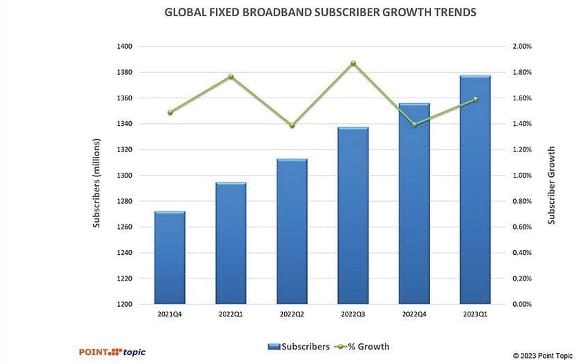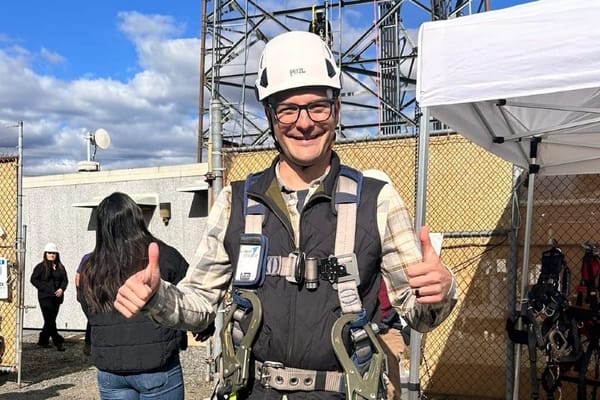
White Paper Provided by COS Systems:
The difference between hitting a home run and striking out in your fiber investments
Investing in fiber infrastructure has gained popularity among investors, resulting in many closed deals in recent years. Regardless, there is still plenty of room for investors seeking a reliable, long- term cash flow. Whereas the latest North American Fiber Broadband report forecasts “the expectation for record North American FTTH growth of over $135 Billion over the next five years - by far the largest five-year growth period ever!”, corporate broker Liberium estimates that ”[...] $600 billion will be invested in data infrastructure, a substantial increase from the $276 billion that has already been committed to assets such as data centers and fiber networks.

Despite these estimates, potential investors may be concerned about inflation, rising interest rates, and the perception that the most attractive deals have already been closed. But as hundreds of millions of households worldwide are still disconnected or served by legacy infra structure, there is still plenty of opportunity.
“Global Broadband Subscriptions at end-2022: Fibre Claims Two Thirds: The share of FTTH/B in the total fixed broadband subscriptions continued to increase and stood at 65.7%. Cable broadband connections followed with a 16.3% share, while ADSL fell to 8.8 and FTTx to 6.8%.”

To succeed with your investment, you need to choose your investment approach wisely.
- Do you want to find a greenfield project?
- Do you want to invest in existing infrastructure and operations by acquiring a challenged fiber player?
- Or do you want to partner with an existing stakeholder with a “ready to go deployment plan and an established based of paying customers”?
1. Understanding Market Dynamics – Securing Demand
Understanding the market is essential, as market conditions vary significantly across countries, cities, areas, and neighborhoods. Demand aggregation reveals where the demand for fiber in your planned area is the highest and where your most motivated customers are. Based on this information, you can decide where to start your build-out and tailor your pre-sign-up offers based on competition, willingness to pay, or the needs of your future subscribers. Everything to maximize your take rates and ROI.
2. Controlling Costs
This might sound very obvious, but there is a lot that you can do to reduce the Total Cost of Ownership (TCO) for both network owners and investors. To keep the investment per home passed as low as possible, you should revise deployment methods and the strategy.
3. Adopting Advanced Software Solutions
Investing in modern and specialized end-to-end automation software is essential for running an efficient FTTH network and delivering excellent customer support, whether investing in a traditional ISP Network or an Open Access Wholesale Network.
Understanding Market Dynamics – Demand Aggregation
Determining demand informs pricing strategies, market initiatives, purchasing, and more. Hence, assessing and securing demand is vital. Demand for FTTH can vary significantly even within the same community, city, or region, so you need to start your project by surveying the demand in your service area with software like COS Business Engine. In addition to showing you in which of your assigned zones the need for fiber is the highest and where you should start your build-out, the software automatically collects IP-based information about which providers your community currently uses and carries out speed tests to determine what speeds your future customers have today. This data gives you actionable insight into competitor names, used services, desired services, and how likely they are to sign up for them.
Your collected survey data lets you know your customers and what they want. You can easily create different pre-sign-up offers for planned service areas – even for single households and addresses. Tailor your pre- sign-up offers based on competition, willingness to pay, or the needs of your future subscribers. Everything to maximize your take rates and ROI.
You also want to minimize the risk of overbuilds, so exploring an open access wholesale approach is well worth your time. In such a network setup, the three layers needed to run an FTTH network, “infrastructure layer, operational layer, and service layer,” are separated and operated by various entities. Any number of service providers can be active in the same market, significantly improving customer choice while still sharing the same infrastructure. Instead of only competing with an existing provider with legacy technology, you can offer them a transition to the next-generation fiber network. Investing in an open access wholesale approach means that
- Network Owners, Network Operators, and Internet Service Providers can exclusively focus on what they’re good at.
- With more choices for subscribers, take rates are often up to three times as high as a Single Provider Network (70-90% vs. 30-50%).
- It is a better business model for creating wholesale revenue streams.
- The open access approach can help improve public and private partnerships as communities invest in infrastructure and provide their citizens with digital possibilities without competing with commercial consumer services.
Cost Control
Keeping your costs and investments low is a priority. One important thing to consider is the fiber installation labor shortage, which, paired with inflation, makes it increasingly necessary to find ways to reduce construction and installation time, as costs for labor typically account for 85% of your installation budget7. Look over your project and see if you can
- Use existing infrastructure where possible.
- Use high-quality systems that make deployment more time efficient, even if the components might be slightly more expensive. A system based on blown fiber can be such a solution, where you can wait to put the fiber in place until you have a paying customer waiting and then quickly blow the required fiber in place.
- Invest in faster and more cost-effective construction techniques such as micro trenching and air-micro cables and microducts.
- Minimize the time to get paying subscribers on the network.
Invest in Top-Notch End-to-End Automation Software
Lastly, investing in modern and specialized end-to-end automation software is essential for running an efficient FTTH network and delivering excellent customer support, whether investing in a traditional Single Provider Network or an Open Access Wholesale Network.
Conclusion
In conclusion, the difference between hitting a home run and striking out in your fiber investment depends on a few but important factors: Understanding market dynamics, securing demand, controlling costs, and adopting advanced software solutions like COS Business Engine! With the right approach, investors can de-risk and future-proof their investments and capitalize on the current fiber investment opportunities.
About COS Systems
COS Systems delivers cloud-hosted software to plan, build, and manage broadband networks globally. COS Business Engine is a proven network management solution (BSS/OSS) supporting Service Providers and Open Access networks. The end-to-end platform provides subscriber self-service and digital sales and marketing through an online marketplace. The platform can activate service orders automatically within a minute, and billing follows with no operator interaction. It offers a great user experience, increasing take rates and revenue.’ As the centerpiece of your fiber business, it integrates with other specialized software platforms to digitize fiber construction management and mapping, creating a comprehensive end-to-end solution for maximum efficiency.
If this white paper has sparked your interest, we invite you to book a free consultation with one of our experts to learn more about our solutions and how they can benefit you.
Note: The proceeding White Paper was provided by COS Systems.




